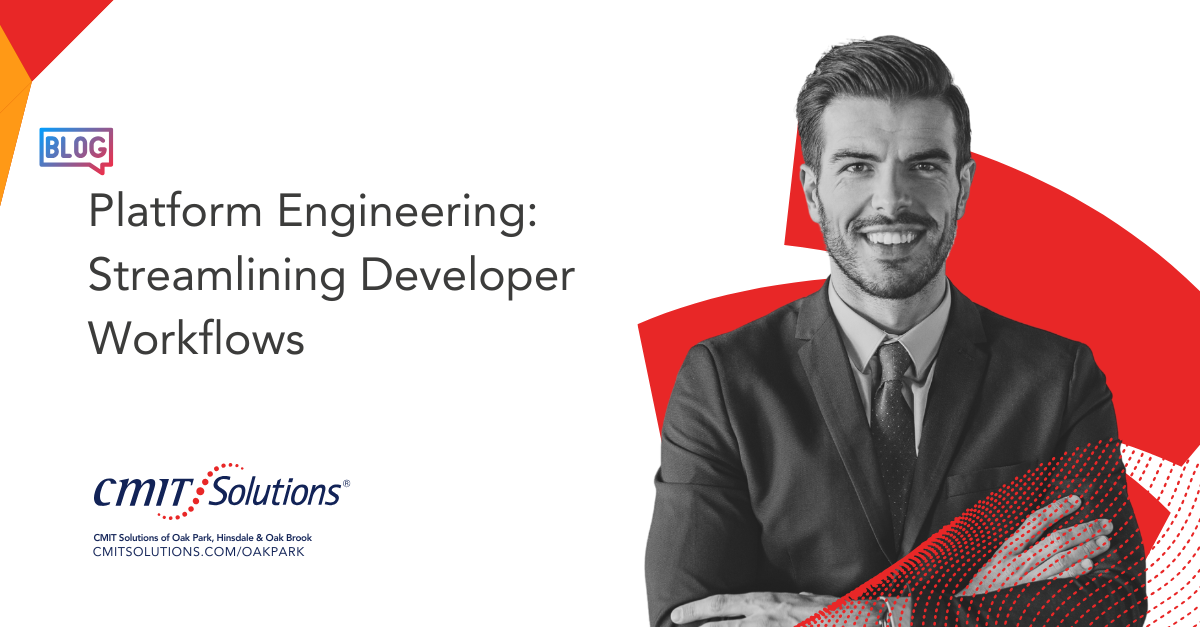Why Platform Engineering Is Essential Today
As digital transformation accelerates, organizations need agile, scalable, and secure solutions that empower developers without overwhelming them. Platform engineering has emerged as a key strategy to streamline development workflows, increase productivity, and improve software delivery.
At CMIT Solutions of Oak Park, Hinsdale & Oak Brook, we view platform engineering not just as a DevOps evolution but as a foundation for operational efficiency, resilience, and innovation. In this blog, we dive deep into its principles, benefits, limitations, and how our suite of IT solutions empowers businesses to adopt and scale platform engineering with confidence.
1. What Is Platform Engineering?
Platform engineering involves creating self-service internal platforms designed to improve the developer experience. These platforms abstract the complexity of infrastructure, security, and deployment pipelines, allowing developers to focus solely on writing and shipping code.
By standardizing environments and automating repetitive tasks, platform engineering enables consistency, reduces time-to-market, and enhances collaboration between development and operations teams.
2. The Core Components of Platform Engineering
To build an effective internal platform, businesses must integrate:
- Infrastructure as Code (IaC)
- Continuous Integration/Continuous Deployment (CI/CD)
- Observability and logging
- Role-based access controls
- Service catalogs and reusable components
Our IT guidance helps organizations architect these components in line with industry best practices.
3. Advantages of Platform Engineering
- Developer Productivity: Teams spend less time on configuration and more on innovation. With boost productivity tools from CMIT Solutions of Oak Park, Hinsdale & Oak Brook, we enhance the efficiency of developer environments.
- Reduced Errors: Standardized pipelines and pre-approved configurations minimize risks of deployment failures.
- Enhanced Collaboration: Developers, operations, and security teams work on a unified platform, improving communication.
- Faster Time-to-Market: Reusable components and automated workflows enable faster testing, deployment, and updates.
- Cost Savings: Centralized resources and scalable infrastructure reduce overhead.
4. Disadvantages and Challenges
Despite its benefits, platform engineering poses several challenges:
- Initial Investment: Building a platform requires time, skilled personnel, and financial resources. Our IT procurement services help businesses make smart, cost-effective investments.
- Maintenance Burden: Platforms require continuous updates and monitoring to stay secure and useful.
- Cultural Shift: Teams must embrace DevOps and agile philosophies to fully leverage internal platforms.
- Complexity: Overengineering or lack of standardization can create new inefficiencies.
5. Role of Cloud and Automation
Platform engineering thrives on automation and scalable infrastructure, especially in the cloud. CMIT Solutions of Oak Park, Hinsdale & Oak Brook enables seamless cloud services that underpin container orchestration, infrastructure provisioning, and CI/CD systems.
Moreover, we utilize automation in cloud operations to drive consistency and speed while reducing manual errors.
6. Strengthening Security in Platform Engineering
Security must be embedded in every layer of the platform. This includes secure coding practices, access control, vulnerability scanning, and threat detection.
We help clients implement multi-layered security across their platforms. Additionally, we deliver cybersecurity simplified strategies to ensure robust protection against evolving threats.
- Backup, Recovery, and Business Continuity
Even the most advanced platforms are vulnerable to outages or attacks. That’s why a strong data backup plan is essential.
We offer disaster recovery solutions that keep development pipelines, repositories, and deployment tools secure and retrievable in the event of failure.
8. Enhancing Team Coordination with Unified Communication
Effective collaboration is critical for platform teams. With unified communication, we enable smooth coordination between developers, testers, product managers, and operations.
Shared dashboards, real-time alerts, and integrated messaging tools reduce friction and boost deployment velocity.
9. Compliance Considerations in Platform Engineering
From GDPR to HIPAA, compliance is non-negotiable. Our compliance solutions help businesses bake compliance into their platforms with features like role-based access, encryption, and audit trails.
We assist with documenting processes, securing environments, and producing reports for audits effortlessly.
10. Scaling with Confidence: The Future of Developer Platforms
Platform engineering is not just a trend—it’s a strategic necessity. As businesses adopt microservices, hybrid clouds, and AI-powered development, the complexity of building and deploying applications grows.
CMIT Solutions of Oak Park, Hinsdale & Oak Brook is your partner in building future-ready platforms that scale with ease, maintain security, and empower developers to innovate fearlessly.
Conclusion: Build Smarter with Platform Engineering
Platform engineering offers immense value by uniting infrastructure, security, automation, and collaboration into a seamless developer experience. However, it demands strategic planning, secure architecture, and ongoing support.
At CMIT Solutions of Oak Park, Hinsdale & Oak Brook, we provide the foundational services that make platform engineering possible — from network management to IT packages and beyond.
If you’re ready to elevate your software delivery, improve developer productivity, and ensure security by design, let us help architect your internal platform journey.






